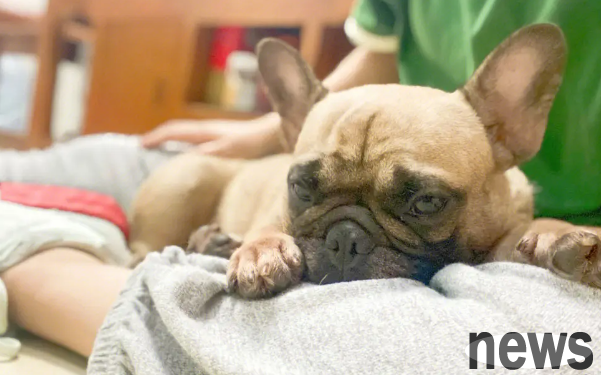During the diet, dogs often experience physiological vomiting, of course this is also a normal physiological reaction, and there is no need for owners to worry too much. However, sometimes dogs will vomit when eating bones, so what should we do?

There are also technical considerations for eating bones for pet dogs, and not all bones can be eaten by dogs.
1. Which bones should not be eaten by dogs:
Do not feed long bones of birds: long bones refer to longer bones on the legs and wings. In order to reduce the weight of flight, the bones of birds are hollow, so when the bones are bitten, they are prone to sharp slopes, which can easily damage the dog's mouth and esophagus. Even if they swallow it, it can easily damage the stomach, so don't feed this type of bone.
2. Do not feed the bones on the neck of the bird: Some friends think that this type of bone is safe and will not be pricked, but in fact, this type of bone is very likely to form esophageal infarction in dogs, especially for some dogs with a more impatient personality. If you don’t chew it properly, it will be troublesome to get stuck in the esophagus. You have to go to the hospital. It’s better to be careful.
3. Do not feed pig bones or cattle and sheep bones with joints: It is best not to chew the big bones with joints for dogs, because we know the enthusiasm of dogs to gnaw bones. There are ligaments connected at the joints. When dogs gnaw, they can easily be inserted into the bone gaps, causing tooth breakage.
2. Which bones can be eaten:
Cooked or raw pigs, cows, and sheep can be fed to dogs. Some people say that raw bones are more beneficial for dogs' digestion and teeth maintenance, so it is recommended to give dogs raw meat.
However, if you give your dog raw meat or bones, you are more likely to get infected with parasites. After all, the system of dogs has deteriorated a lot after being raised by humans for a long time. Therefore, it is recommended that everyone cook the bones for the dog before feeding them.
In addition, when dogs gnaw bones, dog owners should pay attention from time to time: for example, whether there is any damage to the gums, whether there is any effort to swallow the small bones that have been knocked down from the big bones, and whether there is any effort to eat the bone marrow inside to hold the too long bones in their mouths. In short, observe them at all times and do not take it lightly.
3. What should I do if a dog vomits after eating bones?
The small and sharp bones can easily scratch and pierce the dog's mouth and stomach, causing vomiting. In severe cases, it will cause gastrointestinal bleeding and life-threatening.
You can first observe the dog's reaction. If the dog vomits and vomits yellow water after eating the bones, but still jumps around, it's fine. You can eat some "spicy probiotics". This type of probiotic helps to prevent vomiting and regulates gastrointestinal health. If the vomit is bleeding, then send it to the hospital for treatment as soon as possible. Don’t delay it, otherwise the dog’s life will be lost.

4. What should I do if my bones are stuck in my dog's throat?
Once a foreign body is swallowed or there is a poisoning reaction, the most effective first aid method is to induce vomiting. Dissolve a handful of salt into boiling water, pour it down after cooling, and pour it into your mouth with a spoon or a syringe without a needle. Even without vomiting, these saline can dilute toxins and prevent inflammation. It is more effective for two people to work together to get water.
Guidelines: It is recommended that after filling salt water, it should be assisted in induced vomiting. Hold the waist with one hand so that it is head down, and slap the back with the other. Stop for a few seconds for every 10 beats until it spits out. If you still can’t vomit after doing this, don’t continue to waste your time at home and take it to the hospital for professional treatment immediately!